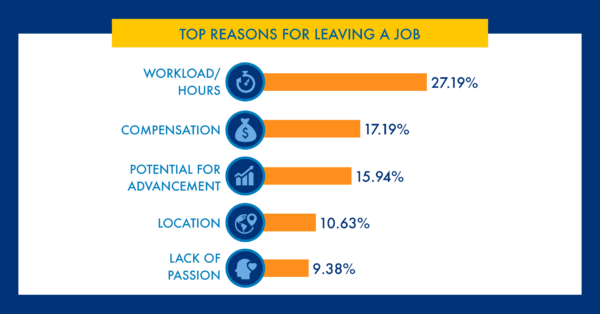Fortunately, in the midst of a crisis of this magnitude, we have good news for you.
We will not say that it is easy, but if you are willing to take action responsibly, your business can succeed if you follow these tips.
First: Analyze What May Be Failing in the Company
Businesses can suffer for many reasons. Some may be due to external factors which are often unavoidable and others are due to internal factors that can be prevented and often amended.
The most important thing before starting any action of rescue for your business It is to make a deep and conscious analysis about why we got to the situation we are in.
This is a lot like going to the doctor. Many times we go when we feel bad or when our body already has symptoms that require urgent medical intervention, despite the fact that we do not recognize that it is we who have allowed ourselves to reach that state of gravity.
The same happens with the company. We make mistakes, we fall into carelessness, irresponsibility, presumption and when we realize it, reversing the effects of bad decisions or actions can be quite complicated.
Here are some of the common reasons why a business could weaken to the point of bankruptcy:
- International crisis that could affect your markets or the policies with which you import and export products, if that were the case.
- Unconscionable and uncontrolled expenses. This is due to the lack of a budget and its fair execution.
- High operating costs (local, services, infrastructure, etc.)
- Theft within the company by employees or situations that put the reputation of the company and its capital at risk
- Contingencies that seriously affects the budget such as unforeseen events, accidents or penalties of any kind
- A bad business projection
- Lazy sellers and / or lack of good sales and marketing strategies
- Have no goals medium and long term
- Too expensive a payroll
- High operating expenses
- Irresponsible management executing discretionary expenses
- Indebtedness continuous without calculated risk
- Etc.
Failure to detect risk indicators in time can inevitably lead to your business closing its doors. However, in most cases when the directors of a company assume their responsibility and manage to take corrective actions, companies can be saved.
Tips To Rescue Your Business
If you notice any of the symptoms mentioned, these are the tips to follow:
- Identify the risk factors in your company. Assemble an emergency team to brainstorm and try to determine as honestly as possible the 2 main causes of business going bad.
Similar to with the doctor. To have an effective treatment, the main symptoms of the disease must be clearly determined. Be honest with yourself and once you identify the risk indicators, then be ready to take immediate corrective action, whatever they may be.
If necessary, help yourself with some professional business consultant to help you visualize potential blind spots more clearly. At this point you will have to make drastic decisions but there is no other alternative to survive.
- Cut unnecessary and excessive expenses. One of the main symptoms that something is not going well is that the money is not enough.
Hence, it is essential to urgently reduce any expense that does not contribute positively to the operation of the business and to generate profits: Too much publicity, purchase of unnecessary items, fuel rationing, frequency of maintenance, rents or rentals of offices that are not functionalities, consumption on telephone lines, meals or trips, etc.
- Evaluate cutting your payroll and redistributing work. Although it sounds harsh to mention it, in times of crisis the measures must be extreme. It’s probably time to downsize and redistribute work.
Remember we talked about rescue your company so if this is not done, your people would lose their jobs anyway. You must make them aware of them and explain that it is the only alternative to get ahead. This will help you reduce your labor liability and reduce payroll costs that are usually quite high.
You can even negotiate the payment of labor liabilities in installments to reduce the initial impact (check the labor laws of your country about this). To do this intelligently, a study must be done with your most trusted collaborators to make the correct decisions.
- Analyze and detect possible money leaks. Whether due to direct or indirect theft, diversion of funds, price alteration or any other method of money leakage, you must detect it and cut it without hesitation.
Take time to analyze the processes within your organization and determine weaknesses in the system that allow “profiteers” to take advantage of what they shouldn’t. Important, do not downplay the “ant” expenses that are usually not very visible but represent huge long-term losses.
- Put an “up to here” for indiscriminate personal expenses. A bad habit you can do fail a business Merciless is the disorderly use of money by its owners or directors. This often happens without being aware of it because they do not have clear reports that reflect it.
So if you really want to come up and breathe, it is important that you start by being the example yourself. Cut out all unnecessary personal expenses and assign yourself a realistic salary according to the situation of your business. If you have a corporate credit card, ask for lower limits and restrict its use as much as possible. And if necessary designate the responsibility of money management to an administrator who does it responsibly.
- Create an emergency sales strategy. Either because of the crisis or for any other reason, ultimately the only way for a business to grow is by selling. If you don’t sell there is no money. Evaluate your marketing and sales strategy. Evaluate your salespeople. Set goals and develop an emergency plan that represents increased results in the short term.
Eliminate all idle, comfortable or senior staff who have to remain without providing results. In times of crisis you must sell, sell and sell. And as I have said in other posts, it is time to leave your desk job out on the streets and be the best salesperson in your organization yourself. This will create a tremendous synergy!
- Evaluate your prices. The rescue actions of a business about to fail they have to be a combination of: more sales and less costs. And for there to be more sales, it is important to evaluate the prices of your products and services as well as the value they bring.
In times of crisis, a moderate adjustment can mean keeping those loyal customers and even capturing a potential market of people who are now more than ever looking for more favorable pricing options.
- Implement a billing plan. Many companies die because their creditors do not pay them. And many companies do not charge because they do not have the system or the character to claim their payments. This is the time to implement a collection strategy that allows you to recover accumulated capital in accounts receivable.
If you don’t know how to do it, hire a temporary or freelance collector to help you recover delinquent portfolio. This will oxygenate your finances and help you get ahead.
A Vital Advice For Your Business
As you can see, the most important thing in all of this is to act early and avoid going into debt blindly. So one last tip that I must add and that is of life and death is NOT to lend money to pay off debts. Using credit cards to pay for services or supplier commitments can be like the “coup de grace” for a weak and dying business.
Avoid doing this at all costs. It is a temptation to access extra financing or fast loans with high rates but you must try not to fall into this trap.
And to finish, I would love to remember the story of Donald Trump, a character who today does not sympathize with everyone but who in the 1980s fell into bankruptcy and ended up having a debt of US $ 900 million dollars. You can imagine !?
So regardless of whether it is to your liking, it is a good example that any entrepreneur can rise from the most acute crisis and come out successful.
Many considered him hopelessly bankrupt, however he got up and today he is one of the most important real estate moguls in the world.
Get up you can, rescue a business that is going bad, It can. But it requires a lot of will, intelligence and seeking external advice to be able to see and amend what we often do not see internally.
If you think this post can be useful for someone who needs it urgently, please share it, you may be helping to rescue a company somewhere on the planet.

























